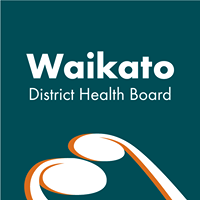Media information
For immediate release
Date: 14 December 2010
Waikato Shallow Lakes Cyanobacterial Warning Update
Four lakes now have health warnings in place
Monitoring results from late November 2010 have shown that cyanobacterial cells are multiplying in four of the five lakes which are routinely tested.
This is an expected consequence of the warm weather we are currently experiencing.
There are health warnings in place for Lakes Ngaroto, Whangape, Hakanoa and Waikare.
Ngaroto and Whangape are the two lakes with the new warning this month.
Environment Waikato is no longer routinely testing Lake Kainui but caution is always advised for users of this lake, because of its history of cyanobacterial blooms.
A recent single test carried out on the water of Kainui confirms that the cyanobacterial levels are well above the human health warning level of 1.8 mm3/L.
As always, these test results should be used for general guidance only, as cyanobacteria and their toxins will not be evenly spread through any lake and may be concentrated in some areas by wind and water movements.
Even just a few days of warm calm sunny weather could produce rapid algal growth, which would be noticeable to users by discoloration of the water or unusual scums forming near the margins.
New guidelines for measuring and responding to cyanobacteria in fresh water recreation sites were published last summer.[1]
Warning levels now take into account not only the number of known toxin producing cells present but also their size.
In recent years some warnings may have been overly cautious when the cyanobacterial species present in large numbers was known to have a small cell size.
Environment Waikato and Waikato District Health Board’s Population Health have moved to full use of the new guidelines as information about the cell size of various species found in local lakes is measured.
Warnings are now issued when the ‘biovolume’ exceeds 1.8 mm3/L. Warnings are based on the likelihood of cyanobacterial toxin being in the water, not on actual toxin measurements.
“During blooms, lakes should not be used for any activity which involves skin contact with the water,” said Population Health medical officer of health Dell Hood.
“If people still choose to do this when warnings are in place, they should shower and change their clothing as soon as possible afterwards, even if no symptoms are noticeable.”
Swallowing water from lakes affected by blooms should also be avoided.
While not everyone will be affected, for some, the risks include rash, skin and eye irritation, allergy symptoms such as hayfever and asthma and possibly stomach upsets such as diarrhoea and vomiting.
These effects may not appear until some time after contact with the affected water. Long term exposure to cyanobacterial toxins may bring additional health risks.
Population Health would like to be informed about health problems which develop after exposure to any of the Waikato lakes.
This allows recording of location, time, the activity taking place and length of time the problem lasted. Follow-up testing may be done, depending on the situation.
Up-to-date information on cyanobacterial cell counts is available from local councils and Environment Waikato: http://www.ew.govt.nz/Environmental-information/Rivers-lakes-and-wetlands/healthyrivers/Waikato-River/Algal-Blooms-in-the-Waikato-region/#Heading4
Health advice is available from Population Health (07) 839 8899 in and out of hours.
ENDS
About Waikato District Health Board and Health Waikato:
Waikato DHB is responsible for planning, funding and providing quality health and disability support services for the 363,400 people living in the Waikato DHB region. It has an annual turnover of $1.1 billion and employs more than 6000 people.
Health Waikato is the DHB’s main provider of hospital and health services with an annual budget of more than $674 million and 4980 staff. It has six groups across five hospital sites, two continuing care facilities and 20 community bases offering a comprehensive range of primary, secondary and tertiary health services.
A wide range of independent providers deliver other Waikato DHB-funded health services - including primary health, pharmacies and community laboratories.
________________________________________
[1]
Ministry for the Environment and Ministry of Health. 2009.
New Zealand Guidelines for Cyanobacteria in Recreational
Fresh Waters - Interim Guidelines.
http://www.mfe.govt.nz/publications/water/guidelines-for-cyanobacteria/index.html
ENDS



 Gordon Campbell: On The Royal Commission Report Into Abuse In Care
Gordon Campbell: On The Royal Commission Report Into Abuse In Care PSA: Overturning Court Of Appeal Decision On Foreshore And Seabed Is Abuse Of Power
PSA: Overturning Court Of Appeal Decision On Foreshore And Seabed Is Abuse Of Power NZ Labour Party: Charter Schools To Remove The Rights Of Teachers
NZ Labour Party: Charter Schools To Remove The Rights Of Teachers Te Pāti Māori: Te iwi Māori Will Not Stand For Another Foreshore And Seabed
Te Pāti Māori: Te iwi Māori Will Not Stand For Another Foreshore And Seabed Cooper Legal: Lawyers For Survivors Support Royal Commission’s Call For Urgent Action
Cooper Legal: Lawyers For Survivors Support Royal Commission’s Call For Urgent Action IHC New Zealand: IHC Slams Winston Peters' Use Of Retard As An Insult In Parliament
IHC New Zealand: IHC Slams Winston Peters' Use Of Retard As An Insult In Parliament NZ Government: PM Speech To Parliament – Royal Commission Of Inquiry’s Report Into Abuse In Care
NZ Government: PM Speech To Parliament – Royal Commission Of Inquiry’s Report Into Abuse In Care


